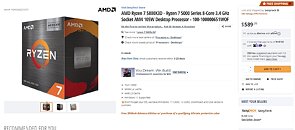
AMD Radeon RX 6950XT Beats GeForce RTX 3090 Ti in 3DMark TimeSpy
We are nearing the arrival of AMD's Radeon RX 6x50XT graphics card refresh series, and benchmarks are starting to appear. Today, we received a 3DMark TimeSpy benchmark of the AMD Radeon RX 6950XT GPU and compared it to existing solutions. More notably, we compared it to NVIDIA's GeForce RTX 3090 Ti and came to a surprise. The Radeon RX 6950XT GPU scored 22209 points in the 3DMark TimeSpy test and looking at Graphics score, while the GeForce RTX 3090 Ti GPU scored 20855 points in the same test. Of course, we have to account that 3DMark TimeSpy is a synthetic benchmark and tends to perform very well on AMD RDNA2 hardware, so we have to wait and see for official independent testing like TechPowerUp's reviews.
AMD Radeon RX 6950XT card was tested with Ryzen 7 5800X3D CPU paired with DDR4-3600 memory and pre-released 22.10-220411n drivers on Windows 10. We could experience higher graphics scores with final drivers and see better performance of the upcoming refreshed SKUs.
AMD Radeon RX 6950XT card was tested with Ryzen 7 5800X3D CPU paired with DDR4-3600 memory and pre-released 22.10-220411n drivers on Windows 10. We could experience higher graphics scores with final drivers and see better performance of the upcoming refreshed SKUs.















































